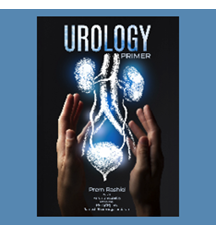2024 | Volume 25 | Issue 6
Vascular Surgery
Case summary
A man in his 60s was admitted for elective repair of an asymptomatic 6.2-cm abdominal aortic aneurysm (AAA). His comorbidities included obesity, chronic obstructive pulmonary disease, hypertension and smoking. He underwent rigorous preoperative evaluation including cardiorespiratory assessment and an anaesthetic review (ASA grade II).
A locum vascular surgeon discussed the case in a multidisciplinary team meeting (MDT). The MDT deemed the patient unsuitable for an endovascular repair due to the adverse anatomy of a short infrarenal neck. The team favoured an open approach to repair the AAA. No additional concerns were raised against this advice.
Due to administrative delays, surgery began just after midday, with the locum vascular surgeon operating without any additional senior surgical assistance. The surgery started smoothly via a transperitoneal approach. A supra-renal clamp was applied and a superior graft anastomosis performed just below the left renal artery. The right renal artery was to be re-implanted into the graft. The perfusion strategy was not outlined in the notes.
Aortic tissue quality at the renal artery level was poor and friable. During re-implantation of the right renal artery, bleeding was encountered from a posterior aortic tear. A supra-coeliac intra-aortic balloon was deployed to gain control and enable completion of the operation. Due to significant haemorrhage, hypovolemic shock, hypothermia and visceral hypoperfusion, the patient became acidotic and coagulopathic.
Postoperatively, the patient required significant intensive care unit (ICU) support. A subsequent return to theatre ensued to resect ischaemic colon and address further graft-site haemorrhage. He was returned to ICU, but his condition deteriorated. The patient died from multiorgan failure as a manifestation of haemorrhage and coagulopathy.
Discussion
This was obviously difficult aortic aneurysm surgery. Ideally, it should have involved an experienced surgeon who had done similar cases successfully in the past (including thoraco-abdominal surgeries), with two consultants operating in tandem. If this was not feasible, the case should have been postponed.
Clamping of the aorta in that visceral segment should have been planned and executed to provide the best aortic exposure and outcome. Clamping between the superior mesenteric artery and the renal arteries is more complex and prone to more complications than supra-coeliac clamping. Visceral perfusion strategies should have been instituted from the start, allowing the surgeon enough time to deal with the complex aortic pathology.
The surgical approach was lacking regarding exposure in an obese patient. Knowing that a supra-renal approach was required, a retroperitoneal exposure would have been ideal to visualise the posterior aspect of the aorta at that level.
Clinical lessons
Difficult surgical cases require recognition of the challenges, appropriate experience and sufficient planning to achieve a good outcome. While the complexity of this case had been identified, there was a clear need for thoughtful surgical planning encompassing exposure, clamping techniques and visceral perfusion strategies. Operating with experienced colleagues is not always required but is always beneficial.

